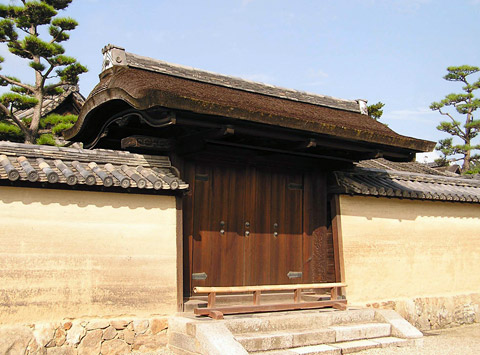Also
*karamon 唐門. A gate characterized
by undulating bargeboards *karahafu 唐破風, on each gable end. The entrance is on the long side between the gables.
This type of gate may be one-bay wide, with a one-bay opening; three-bays
wide, with a one-bay opening, or three-bays wide, with one opening of the
four-legged style *shikyakumon 四脚門. The oldest extant undulating gable can be found on the front eaves
of a miniature shrine *zushi 厨子, housed in the Houryuuji *Shouryouin 法隆寺聖霊院 (1121) in Nara. The existence of the zushi seems to suggest
that gates with undulating gables appeared during the late Heian period.
The Hounen Shounin eden 法然上人絵伝 (the late 13c; see *Hounen 法然), contains a drawing
of a hirakaramon. However, the oldest extant hirakaramon is
a four-legged gate at Myoushinji Gyokuhouin 妙心寺玉鳳院 (early 15c) in Kyoto.
Originally, this style of gate was used at palaces and called *miyukimon 御幸門. The largest hirakaramon is the Daigoji Sanbouin Karamon 醍醐寺三宝院唐門. It was moved to Kyoto in 1603. It is three-bays wide, and has
one opening (6.27m x 2.60m). The double-leaf doors and side panels are
decorated with chrysanthemums and paulownia.
|



